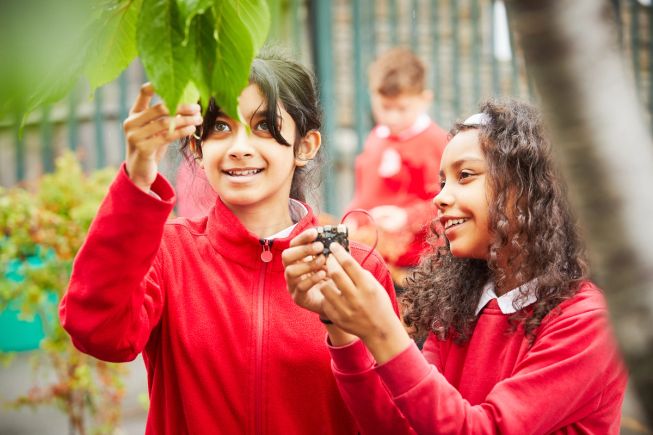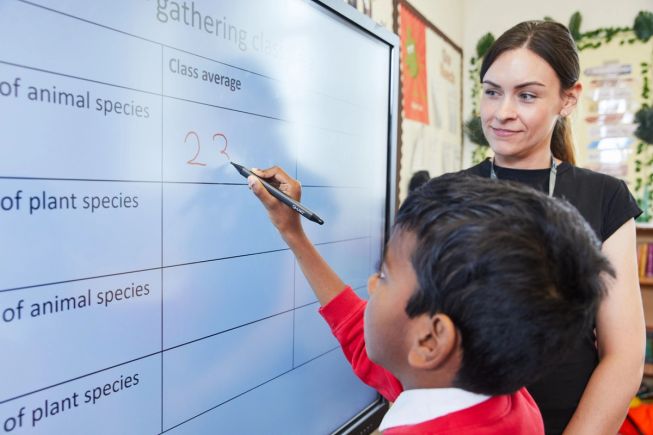Step 1: Introduce it
First, watch the video
Visit BBC Teach to watch the playground survey activity video and download the complete set of teacher instructions.

How it works
- This program helps count the number of species of animals and plants in your playground.
- The program uses 2 variables, one called animals and one called plants.
- Pressing button A updates the animal variable by 1
- Pressing button B updates the plants variable by 1
- The program uses the micro:bit touch sensor logo to view the totals. Once pressed, the icon for animal species will scroll on the LEDs, followed by the total. After a short pause, the plant species icon and total will also scroll across the LEDs.
- When working with a large group, it is helpful if half the class log animals and the other half log plants.
- If there are lots of plants growing in one area, then it may help to divide the area into smaller sections, or allocate different types of plant species to different pupils. For example, some log different species of trees and bushes while others log grasses and flowers.

What you need
- micro:bit and battery pack for each pupil, pair or small group
- MakeCode editor to code (optional) or downloaded hex file ready to use
- To put code on your micro:bit you will need one of the following:
- a computer (e.g. laptop or Chromebook) and a micro:bit USB lead
- an Android tablet and the micro:bit USB lead and an adaptor (support article with more detail)
- an Apple iPad with Bluetooth enabled and the micro:bit app (support article with more detail for Apple iPads)
Step 2: Code it
This step-by-step video shows you how to code your micro:bit to become a biodiversity counter:
Make it your own
- Create your own animal and plants icons.
- Add a sound to signal a button press for animals and a different sound for plants.
- Add cardboard to make the buttons easier to press, as seen in the Improve it section of the Emotion badge project.
Step 3: Use it
Gather data in your playground
Transfer the code to your micro:bit, and plug in your battery pack to get started.
Follow the teacher instructions for this fieldwork session.
Encourage pupils to make predictions based on their current scientific knowledge before you begin.
Remember - count the number of species you see, not the number of animals/plants.

Step 4: Analyse & use data
Use the pupil worksheet to note down the totals displayed on the micro:bit.
Working together, calculate the class average totals for each species and record them on the pupil worksheet and playground survey class poster
Use the teacher instructions to support analysing the data together in the classroom. You could ask the following questions:
Questions about our findings:
- Were you surprised by your data or not?
- Can you see any patterns in the data you collected?
- What does this data tell us about our playground?
Link back to what we wanted to find out:
- How many different species of plants and animals do we have in our playground?
- Were our predictions correct?
Look ahead:
- What action do we want to take based on our findings?